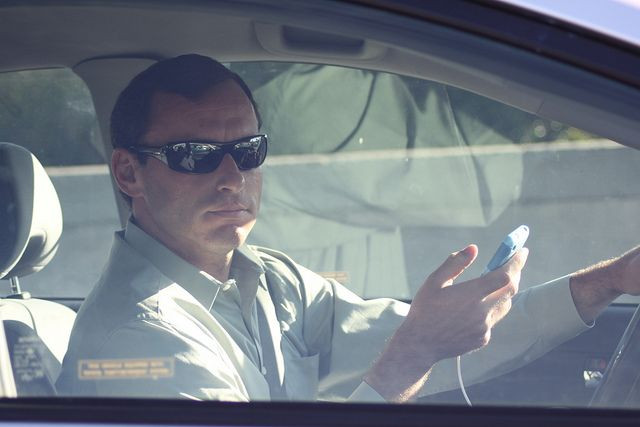Texting While Driving Offenses Caught Directly By Police See Marked Drop In Auto Fatalities

The easier it is for a police officer to write you a ticket for texting while driving, the safer the roads will probably be, argues a new study from the University of Alabama at Birmingham.
Texting while driving is the 21st century’s dangerous rebuttal to the drunk driving tragedies of decades past. And as cell phones get more intuitive, picking up on users’ miscues more deftly with each passing tech generation, young drivers grow more confident in their abilities to multitask behind the wheel. But as the data continues to show, distracted driving fatality rates rank highest among teen drivers.
According to the latest study authors, these feelings of invincibility could use some tempering. The problem is, too little is known about which texting bans result in the most dramatic declines in automotive fatalities, or if they do at all. “Given the considerable variation in the types of laws that states have passed and whom they ban from what, it was necessary to determine which types of laws are most beneficial in improving roadway safety,” said Alva O. Ferdinand, lead author of the study and public health expert, in a statement.
Some states have banned drivers from texting, while others have bans on using devices altogether, and others still have limited either of these bans only to minors, seeing their heavy effect on the statistics overall. Traditionally, a state will either implement a secondary ban, where the law forbids texting while driving, but an officer must have a primary reason for pulling a car over first, such as running a red light or speeding. Other states have made texting while driving a primary offense in its own right, so if an officer sees you texting he may pull you over without separate cause.
Teasing out the mixed effects of these two types of bans hasn’t been done before, Ferdinand says, and she wanted to find out which type of ban was doing the heavy lifting. “Our results indicated that primary texting bans were significantly associated with a three percent reduction in traffic fatalities among all age groups,” she said, “which equates to an average of 19 deaths prevented per year in states with such bans.” And emphasizing the true danger of young hands behind the wheel, the study found primary bans among only 15- to 21-year-olds reduced the fatality rate by 11 percent among the same cohort.
Interestingly, the study also found hands-free technology bans produced a similar decline in fatality risk among the 21 to 64 population, even though outright texting bans didn’t yield an effect. Part of the difference may lie in how each ban is enforced. While hands-free systems are, seemingly by default, the older age group’s preferred mode of communication, there are few devices that be confused for a headset.
What an officer sees as texting, however, could be any number of activities, from changing the music that’s playing or searching for directions. The false positive rate, in other words, would feasibly be much higher among the 15 to 21 crowd simply because they’re using their phone directly, not hands-free in other words, more often than the older cohort.
In the end, what makes intuitive sense to most people is probably closest to what the data bears out. Policymakers would do well to implement, or at the very least propose, legislation that gives preference to primary texting bans. “Clearly, distracted driving is a growing problem affecting everyone on the roadways,” co-author and professor in the Department of Health Care Organization and Policy, Dr. Nir Menachemi, said. “It is my hope that policymakers act upon our findings so that motor-vehicle deaths can be prevented.”
Source: Ferdinand A, Menachemi N, Sen B, et al. Impact of Texting Laws on Motor Vehicular Fatalities in the United States. American Journal of Public Health. 2014.



























